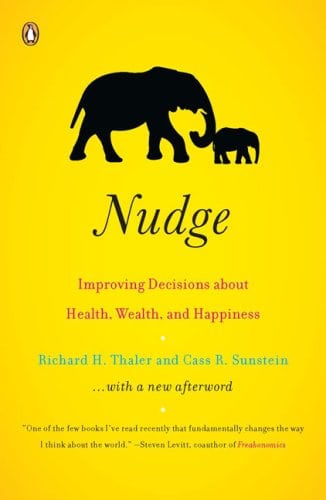 Normally I switch between reading a non-fiction and fiction literature in succession as one tends to make me feel like I’ve eaten a healthy square meal and the latter a piece of dessert. Each balances the other off on my palette.
Normally I switch between reading a non-fiction and fiction literature in succession as one tends to make me feel like I’ve eaten a healthy square meal and the latter a piece of dessert. Each balances the other off on my palette.
However, recently I’ve been on a kick around pieces of literature that delve into the art & science of thinking and decision making. Not the kind that analyzes sentence structure or the kind that has one calculating expected value across a slew of decision trees that multiply faster than a pair of fruit flies. No, these are books that study how the brain works drawing from the fields of neuroscience and psychology and explained using everyday events to make the package appetizing and digestible.
The latest in the slew of books of this genre is “Nudge” written by Richard H. Thaler and Cass R. Sunstein. The book is thought-provoking, has current relevance and is full of substance.
Ironically, on the cover of the book, the endorsement was given by Steven D. Levitt, author of Freakonomics which was an entertaining book that left me slightly disappointed as it was light on substance. In my opinion, Freakonomics could have been half the length it actually was.
Back to ‘Nudge’.
Unlike some of the other books I have read in this area, what is unique about Nudge is that it looks at the question of thinking and decision-making not as individuals but from the perspective of public policy and how to design systems and programs that successfully nudge groups of people into successfully making the right decisions. They call this “choice architecture”. Thaler and Sunstein accomplishes this by defining people as “Humans”, not “Econs” which throws away the notion that people are completely rational beings. Inherent in this exercise is that individuals should have the freedom to choose, however, from the perspective of public policy and its implementation, there can be ways to design systems so that it predisposes the people make choices that results in the greatest overall public value.
In a little over 250 pages, the authors thoughtfully apply this notion to the design and implementation of key areas of public policy such as education and health care, as well as recent controversial areas such as marriage.
A particular chapter that is near and dear to my heart being in an area of technology where I try to help government agencies quantify the benefits of user-friendly design, is chapter 10 labeled, “Prescription Drugs: Part D for Daunting”. In this chapter, the authors cite the confusing design of enrollment amongst a dizzying number of plans for Medicare Part D to be a major hindrance to the the original goals of providing affordable health care to seniors. A key cause were the tools provided, whether online or assisted were not user-friendly. An experiment where the authors retained experts to try to navigate the plans and select the most cost-effective program based on a simple set of parameters such as the drugs a given applicant takes resulted in inconsistent results. I mentioned the contents of this chapter to several folks over Facebook and in airports while I was reading this book and it was met with fervent agreement that Part D enrollment is confusing.
Another section on page 232 talks about the suggestion of “The Automatic Tax Return” which I wish I had read before my two presentations at the Federation of Tax Administrators just two weeks earlier.
As you can see, I thoroughly enjoyed this book and it has started to impact how I think about the world and has augmented the perspectives I share with the government agencies I try to advise. I would highly recommend this book to anyone in the area of public policy and implementation, especially those that use technology to design systems that are public facing.
Dear Reader, one piece of warning is that this is not a piece of dessert. It is a dense, substantive piece of healthy thinking.


